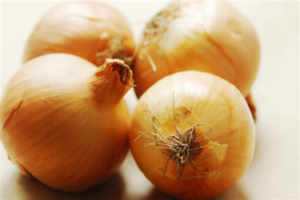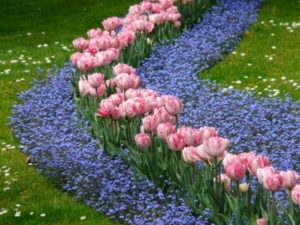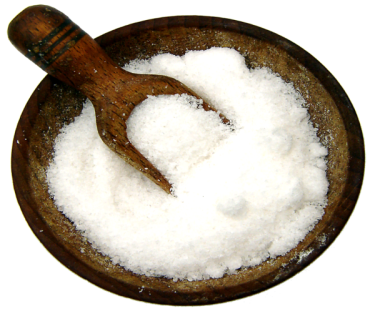
Epsom Salt in gardening, also known as Magnesium Sulfate (MgSO4), is famous for its plant nourishment and soil enhancement properties. This special type of salt is being used for gardening purposes for hundreds of years – with a majority of the gardeners using it to treat magnesium deficiency in plants.
Not an alternative to fertilizer, Epsom Salt should be sprayed or used on deficient-plants and soil twice or three times a month only.
Before we discover the in-depth details of using Epsom Salt in gardening, here’s an overview of the major benefits that Epsom salt provides:
Speeds up plant growth
Accelerates plant nutrient uptake
Prepares roots to absorb important nutrients and proteins
Softens the soil and makes the ‘locked soil’ acceptable to nitrogen and phosphorus
Prevents leaves from curling and turning yellow
Treats magnesium deficiency in plants
Improves plant and soil ‘s overall health
What is Epsom Salt?
Epsom salt is a chemical compound made up of magnesium, sulfur, and oxygen. It is also known by the name of Magnesium sulfate and has a white crystalline solid texture (just like table salt). Its chemical formula is MgSO4.
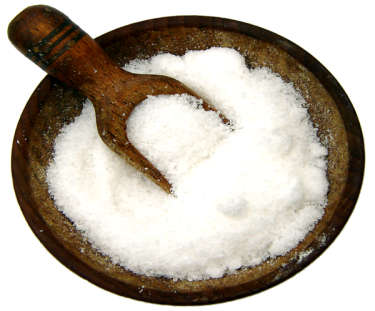
This salt is named “Epsom”, because it was first discovered in Epsom Town, Surrey, England in the early 1600s.
Epsom salt is an entirely different compound than the regular table salt we use in our homes. Containing 10% magnesium and 13% sulfur, this salt has a sharp bitter taste though its looks are almost similar to table salt.
Epsom salt is famously known for its high magnesium content, naturally treating magnesium deficiency – a mineral that some plants and human beings do not get enough of.
Due to the salt’s unpalatability, Epsom salt is most commonly used as a “bath salt” by humans. But some people also consume it by dissolving a pinch of salt in water and drinking it.
As far as gardening is concerned; Epsom salt is used to treat magnesium deficiency in plants, increase nutrient uptake, make the soil soft and nutrient absorbent, and improve plant and soil ‘s overall health.
What Good Does Epsom Salt In Gardening Do For Plants?
Epsom salt is used by gardeners to promote healthy, full, and lush-green plantation. Rich in magnesium; the salt works by treating magnesium deficiency in plants, increasing soil’s nutrient-absorbing properties, preventing leaf curling, and boosting overall plant health.
Here’s what Epsom salt does for plants, how it comes to be so much beneficial for plantation, and why it should be used in the plantation process.
1). Epsom salt increases nutrient absorption.
Sometimes even using a good-quality fertilizer does not help in achieving the desired growth and vegetation output. This is because sometimes the soil gets locked and stops absorbing in valuable nutrients – nitrogen, phosphorus, and potassium – which as a result deteriorates plant health.
Rich in magnesium content; Epsom salt conditions soil and prepares roots to absorb important nutrients and proteins for healthier growth.
2). Epsom salt promotes lush green plantations.
Epsom salt is highly beneficial in turning yellow leaves and grass back to a beautiful green. It does this by magnesium in Epsom salt promoting the creation of chlorophyll in the plant, which is responsible for the plant’s leaf color. It also helps plants to photosynthesize, a procedure that empowers the plant to create food and energy for itself.
There are several reasons for the plant leaves turning yellow. It could be due to pests and fungus. But if you can’t spot insects or black fungus spots on yellowed leaves; the problem could have been caused due to magnesium deficiency and lack of nutrient absorption. Therefore, spraying the affected area with the Epsom salt solution will surely get you rid of this problem.
3). Epsom salt provides plant-beneficial micronutrients.
Epsom salt contains two micronutrients – magnesium and sulfur – which are highly valuable for plants. A few cultivators contend that these micronutrients are not imperatively significant for the plant, while others guarantee that they have a significant effect on a plant’s fruitful development.
Truth be told, the type of plant you have will decide if these Epsom salt produced micronutrients are important or not.
Most leafy vegetable plants like spinach, coriander, salad greens; and beans like green peas will perform great even with extremely low magnesium levels; in this way, Epsom salts would not have any perceptible effect on the development of these plants.
However on the other hand; roses, peppers, and tomato plants require sufficient levels of magnesium to flourish, so it is these plants that would profit by the micronutrients contained inside Epsom salt.
Studies conducted by the National Gardening Association and other alike platforms have revealed that rose plants grown with Epsom salt as opposed to those grown without Epsom salt produced more roses with greater blooms, while pepper plants created bigger peppers.
4). Epsom salt deters pests naturally.
Epsom salt helps to get rid of common garden pests, such as slugs and snails, while also conditioning the soil with its antifungal properties. Although it helps to deter pests, it shouldn’t be considered as the primary product to repel plant bugs.
5). Epsom salt gives new seeds a better start.
Using Epsom salt before seedling provides good results. Magnesium and sulfur are lost during the seed germination process, therefore, using Epsom salt will give the new seed sufficient supply of both the elements as well as boost seed germination by strengthening plant cell walls and increased vitality for faster growth.
Which Plants Are Best Suited for Epsom Salt?
Epsom salt can be used on a wide variety of plants, except leafy vegetable plants. Here are all the major plants on which Epsom salt works the best:
Good for Tomato Plant
Tomato plant needs lots of magnesium during the growing process. Epsom salt is highly beneficial in maintaining the magnesium levels at optimal levels, thereby, strengthening the plant and making it capable of producing sweeter and tastier tomatoes in a far bigger quantity per plant.
Good for Pepper Plant
Just like tomato plants, pepper plants are traditionally magnesium deficient and need good Epsom salt quantity for proper pepper growth.
Good for Roses
Rose plants require an adequate supply of magnesium for the smooth production of chlorophyll, as well as for the increment in the absorbency of sulfur, phosphorus, nitrogen, and other valuable proteins and nutrients. A majority of rose gardeners use Epsom salt for achieving vibrant, rich-color, fragrant, beautiful roses, and more blooms per plant.
Good for Azalea Shrubs
Using Epsom salt for flower shrubs like Azalea greatly improves the shrub health and promotes the production of perfectly-textured flowers. The shrubs and flower plants also grow strong and produce more blooms.
Good for Rhododendron Plants
The addition of Epsom salt prevents Rhododendron and other alike plants from turning “yellow” and curving due to magnesium and sulfate deficiency. It boosts flower production, with beautiful colors and texture.
Good for Fruit Trees
Fruit production is a long process and magnesium levels of fruit trees often drop during this phase. Application of Epsom salt helps to maintain the magnesium level as well as boosts production of delicious, nutritious; and more weather and pest resistant fruits.
Overall, Epsom salt is best suited for fruit trees – to promote delicious fruit production; flowering plants – to get beautiful and rich-textured flowers; as well as ideal to treat trees and plants with frizzled tops and leaves that are yellow and curled.
Using Epsom Salt for Plants: How To Use & How Much (Quantity)?
Most gardeners recommend mixing 1 tablespoon of Epsom salt in 1 gallon of water and then spraying the solution on the plant leaves. For plants with chances of extreme magnesium deficiency, such as rose and pepper plants, you can spray the solution twice a week at max. For other plants, spray the solution once every week.
Salt can also be dissolved in water and used to water plants by drenching the soil at ground level.
When planting new seeds or shifting plants from one pot to another, you can directly add one teaspoon of Epsom salt directly into the soil and blend it to boost greener and healthier growth and fix transplant shock in plans, respectively.
When planting new seeds – Add one tbsp of Epsom salt into each hole and work it with soil before planting new seeds. Alternatively, you can apply a drench of the “Epsom salt + Water” solution to the soil after planting a seed.
For increasing nutrient absorption – Pour the Epsom salt + Water solution at the base of the plant, and let the soil soak it. Once soaked, the nutrient absorption properties of soil and roots will be started.
To prevent transplant shock – Add a tablespoon of Epsom salt directly into the hole before planting the transported plant in the new location. Afterward, water thoroughly.
To deter pests – Simply spray the liquid Epsom solution on to the plant’s foliage, or sprinkle dry Epsom salt around the base of the plants to prevent slug or snail infestation.
For delicious fruits and beautiful flowers – Spray fruit trees, fruit roots, and leaves with Epsom-water solution, not more than twice a month. If planting new seeds, add a tablespoon of Epsom salt to each planting hole. The salt can also be directly sprinkled on the root-bed area, with a proportion of 2 tbsp Epsom salt for 9-ft root-bed area, after every 4 months.
Application for a lush green lawn – One pound of Epsom salt goes with 600 square feet of lawn. Evenly sprinkle the salt, and then water your lawn. Do this every month.
Important Things To Keep In Mind
Epsom salt does not contain the key nutrients – nitrogen, phosphorus, or potassium – and is not a substitute for fertilizer. Therefore, it should only be used as a secondary supplement for plants, and not as a primary product for nourishing a plant.
It should not be used on acidic soil.
It should only be used on plants with magnesium deficiency.
It should never be used on leafy green vegetables.
Don’t eat fruit or vegetables after spraying the fruit tree or vegetable crop with Epsom salt. First, wash the fruit with water and then consume it.
Only buy branded and 100% organic Epsom salt. Avoid locally available salt, as they aren’t all-natural and contain chemicals as well.
*Tip: 100% organic Epsom salt has a good shine.
Do not use plant-compatible Epsom salt for bathing or cooking purposes. If needed, use edible Epsom salt and not the plant one for your use.
It’s best to have a soil test done before treating it with anything to fix the problems you are facing. Sometimes Magnesium deficiency may not be the root cause of the problem you are facing with your plant.
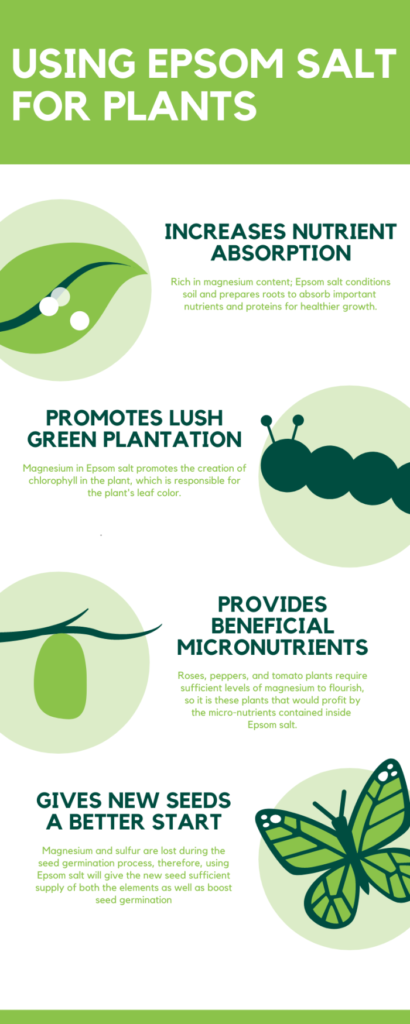
Conclusion:
Epsom salt is a highly beneficial product for plants that lack magnesium and sulfur. When applied the right way; the salt increases the plant’s nutrient absorption properties, promotes the growth of greener leaves, fixes leaf curls, fixes yellowish tint, gives new seeds a better start, aids in beautiful flower production, and helps trees produce the most delicious fruits and vegetables. Apart from all this, it should be used in less quantity and applied to deficient shrubs only.
[embedded content]

